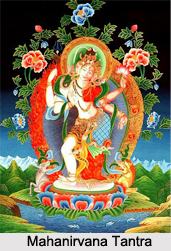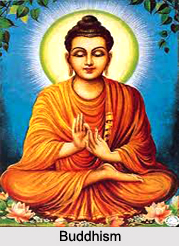 Women and the lower caste had experienced greater freedom as far as religious performances are concerned thereby emphasizing the significance of Tantra. The rigid caste discrimination of the Brahmanical system was not accepted. Greater emphasis was laid on practices of certain kinds which would lead to the way to salvation. Only meditation was not enough in Tantra. It prescribed means of healing diseases, causing mischief to enemies and acquiring worldly happiness. Tantra also taught means of acquiring supernatural power through which many worldly things could be achieved.
Women and the lower caste had experienced greater freedom as far as religious performances are concerned thereby emphasizing the significance of Tantra. The rigid caste discrimination of the Brahmanical system was not accepted. Greater emphasis was laid on practices of certain kinds which would lead to the way to salvation. Only meditation was not enough in Tantra. It prescribed means of healing diseases, causing mischief to enemies and acquiring worldly happiness. Tantra also taught means of acquiring supernatural power through which many worldly things could be achieved.
The tradition of Tantra was popular among the masses. It left its imprint on the Puranas and Smriti due to its wide reach. It played a crucial role in the religious and social life of India. The religious practices were deeply touched with Tantric colour. The mystic syllables, Mandalas, yantras and mudras were incorporated into the traditional modes of worship. In several Smriti journals references have been made to Tantras and quotations of Tantric verses, mantras and so on. The dominance of Tantra in Kali has been stated in the Mahanirvana-tantra. The religion of Buddhism has been highly influenced by Tantra. The deep influence of Tantra has led to the rise of Buddhist Sahajiya cult which in turn was responsible for the rise of Vaishnava Sahajiya cult.
 The basic unities of cults like Buddha Sahajiya and Vaishnava Sahajiya is that all aim at the attainment of supreme bliss caused by Sadhana performed by man and woman in conjunction. According to these faiths, two separate currents combine to give rise to advaya-tattva which means complete bliss. This advaya-tattva according to Tantra is bliss which is effect of the union of two currents represented by Shiva and Sakti. One can achieve this state of supreme bliss by Tantric Sadhana which consists in Yogic practices.
Tantra is valuable in other respects too.
The basic unities of cults like Buddha Sahajiya and Vaishnava Sahajiya is that all aim at the attainment of supreme bliss caused by Sadhana performed by man and woman in conjunction. According to these faiths, two separate currents combine to give rise to advaya-tattva which means complete bliss. This advaya-tattva according to Tantra is bliss which is effect of the union of two currents represented by Shiva and Sakti. One can achieve this state of supreme bliss by Tantric Sadhana which consists in Yogic practices.
Tantra is valuable in other respects too.
Articles of food and drink which are offered to the deities reflect the food-habits of the people. Some Tantras also reveal people`s moral outlook and their ideas. Some Tantras, especially those related to Kashmir Shaivism is inherent with high philosophical ideas. They value the history of Indian philosophy. There is very less information about the authors in Sanskrit works. However some Tantric works contain information about their authors, dates and patrons. Tantra is valuable from the viewpoint of history of Sanskrit literature. A Tantra entitled Vidyarnava is important for political history as it gives an account of the foundation of the town of Vijaynagar. From one Tantra Brihad-gautamiya one comes to know of different regions of India where Tantric religion developed and Tantras were composed.









